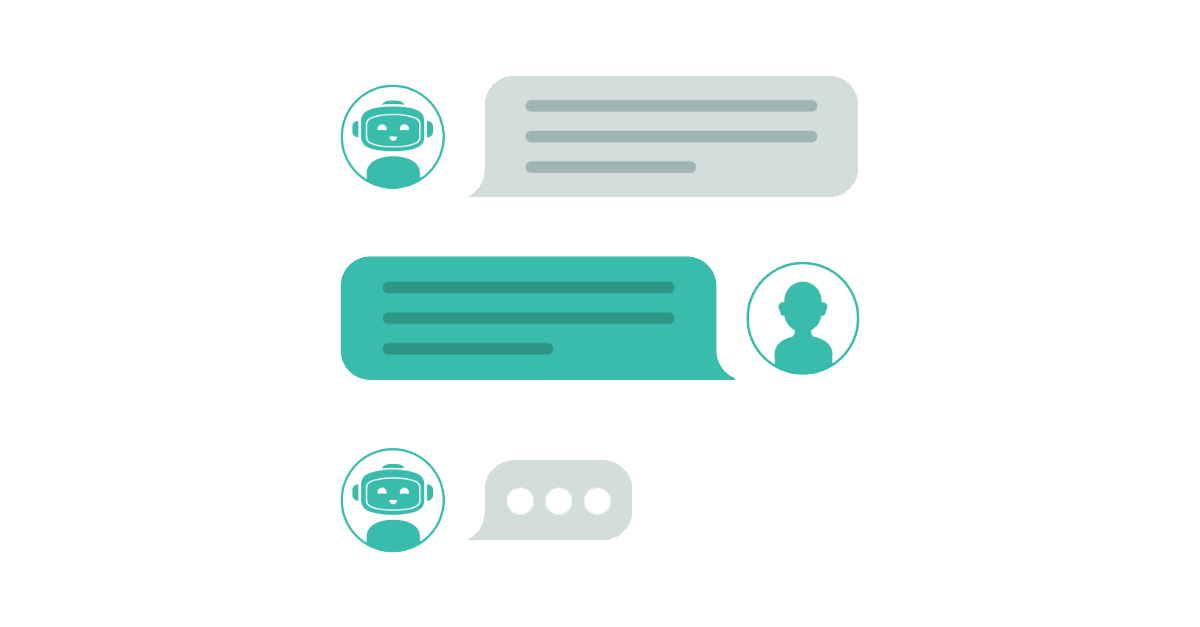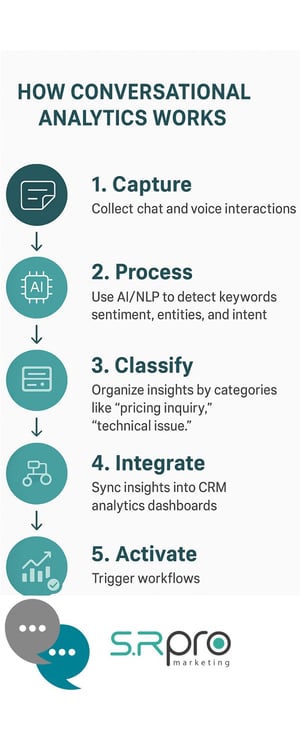
Chatbots, Voice & Intent Data: Lessons From Conversational Analytics

Chatbots and voice assistants have become an essential part of how customers interact with brands. They help answer questions, guide decisions, and deliver real-time support. When used strategically, they do more than automate responses. They capture the words, tone, and patterns that reveal what customers truly want.
This article explores how conversational analytics, the process of analyzing interactions from chatbots and voice interfaces, uncovers intent data that can transform marketing, sales, and customer experience strategies. You’ll learn how businesses can turn unstructured dialogue into actionable insights to identify opportunities, remove friction, and personalize engagement at scale.
Chatbots and voice interfaces aren’t just support tools. They’re intent data engines. Every conversation contains signals about needs, objections, motivations, and opportunities, which are the foundation for smarter, data-driven decision-making.
What Is Conversational Analytics and Why It Matters
Conversational analytics is the process of extracting insights from human-to-machine interactions. These can come from messages typed into a chatbot or words spoken to a voice assistant.
Using natural language processing (NLP), sentiment analysis, and AI models, businesses can interpret this unstructured data to uncover what customers are thinking and feeling. In short, it helps decode the meaning behind every user interaction.
Unlike traditional analytics, which focus on what users do (clicks, form fills, purchases), conversational analytics reveals why they do it. It captures the underlying intent, emotion, and context that drive behavior. This shift from behavioral to intent-based data is transforming modern marketing and CX. It offers richer context for personalization and helps businesses move from reactive to predictive engagement, understanding needs before they’re even expressed.
Chatbots & Voice Interfaces as Intent Data Engines
Chatbots and voice interfaces do more than handle customer requests. Analyzing these conversations can help businesses uncover patterns that reveal customer needs, preferences, and motivations.
Chatbots
Every chat conversation contains high-value clues about customer intent. When a user asks about pricing, availability, or discounts, they’re signaling purchase readiness. Questions about delivery times or specifications often reflect decision-stage interest.
Chat pattern analysis can help marketers identify recurring pain points, refine messaging, and trigger automation workflows that match each stage of the customer journey. More than improving service, chatbot data sharpens targeting, segmentation, and conversion strategy.
Voice Interfaces
Voice interactions go a step further by adding emotional and contextual depth. The tone, pace, and choice of words reveal nuances that text alone can’t capture, such as urgency, frustration, excitement, or hesitation.
Through voice intent analysis, businesses can detect sentiment and personalize responses in real time. For example, a frustrated tone during a support call might trigger escalation to a human agent. Over time, as voice systems gather more interactions, they continuously refine accuracy, enabling smarter and more human-like engagement.
How Conversational Analytics Works
Before diving into real-world applications, refer to the infographic below. It illustrates how conversational analytics transforms raw conversations into structured, actionable intent data.
 1. Capture – Collect chat and voice interactions across customer touchpoints.
1. Capture – Collect chat and voice interactions across customer touchpoints.
2. Process – Use AI/NLP to detect keywords, sentiment, entities, and intent.
3. Classify – Organize insights by categories like “pricing inquiry,” “technical issue,” or “feature request.”
4. Integrate – Sync insights into CRM, analytics dashboards, or marketing automation platforms.
5. Activate – Use the data to trigger workflows, prioritize leads, or enhance the customer experience.
This framework not only simplifies massive amounts of conversational data but also connects it directly to business outcomes.
Real-World Use Cases
Conversational analytics isn’t just about understanding words. It’s about uncovering intent, sentiment, and opportunities hidden in everyday interactions. Here’s how different teams can put these insights to work across the customer lifecycle:
Marketing Optimization
Conversational data reveals what customers really want to know, highlighting content gaps, trending topics, and untapped keyword opportunities. For instance, when users repeatedly ask about pricing or comparisons, marketing teams can create targeted landing pages or nurture campaigns that answer these questions directly, improving both engagement and conversions.
Sales Enablement
Sales teams can leverage intent signals from chat and call interactions to identify high-value prospects and follow up strategically. If a lead expresses specific interest or concern (e.g., “Does this integrate with our CRM?”), reps can prioritize outreach with tailored responses. These insights also help refine messaging, anticipate objections, and shorten sales cycles.
Customer Experience
CX teams can use conversational insights to pinpoint recurring pain points, such as confusing checkout steps or missing FAQs, and address them before they escalate. By analyzing patterns in support chats or voice interactions, they can enhance onboarding, streamline support flows, and improve overall satisfaction.
Product Development
Aggregating feedback from customer conversations gives product teams a direct line to user sentiment. When multiple users request similar features or voice frustrations about a specific function, those insights can be funneled into product roadmaps. This ensures updates reflect real customer needs and maintain a strong product-market fit.
Operational Efficiency
Conversational analytics can also streamline internal processes by identifying repetitive inquiries or tasks that can be automated. For example, if many customers ask the same support question, chatbots can handle those queries instantly, freeing human agents for complex issues. Similarly, voice data can uncover workflow bottlenecks or training gaps, improving overall efficiency and reducing operational costs.
Privacy, Ethics, and the Human Factor
As businesses increasingly rely on conversational data for insights, responsible data management is essential. Every system that collects or analyzes customer interactions should prioritize transparency, consent, and anonymization to maintain trust and comply with data privacy regulations.
While automation delivers speed and scale, it must be guided by human empathy and oversight. AI can interpret tone and sentiment, but human review ensures accuracy, relevance, and ethical context. The most effective conversational analytics strategies combine machine intelligence with human judgment to deliver insights that are both meaningful and responsible.
The Future of Intent Data Through Conversation
Conversational analytics is entering a new era driven by generative AI and multimodal models that can interpret not only words but also tone, pace, and emotion. These advancements move beyond understanding what customers say to uncovering how they feel, and even anticipating what they might do next.
This predictive power will enable businesses to identify churn risks, uncover upsell and cross-sell opportunities, and monitor customer satisfaction in real time. As conversational data becomes more deeply integrated into RevOps, predictive analytics, and AI copilots, it will evolve from a support function into a strategic core—fueling smarter, faster, and more customer-centric decision-making.
Conclusion: Turning Conversations into Competitive Advantage
Conversations are not just interactions. They’re continuous streams of intent and insight that reveal how customers think, feel, and make decision. Businesses that analyze and act on these signals gain a deeper understanding of customer motivations, leading to more targeted marketing, faster sales cycles, and stronger overall experiences.
At SR Professional Marketing, we help businesses turn chatbot and voice interactions into actionable intent data that drives automation, personalization, and growth. Let’s turn your customer conversations into your next competitive advantage today.
